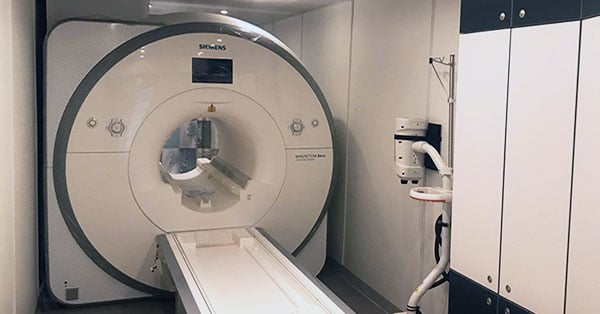
March 22, 2023 : 2 min read
What Does 'End of Life' Mean for MRI Scanners?
If you own an MRI scanner, your original equipment manufacturer (OEM) has likely used the phrase "end of life" when discussing your equipment.
The term "end of life" can be confusing, especially if your system is performing to your facility's liking.
So, what exactly does an EOL designation mean for your MRI system?
What steps should you take moving forward?
Below we will walk you through what EOL means, and why you don't need to run a buy a new system just yet.
What happens when the OEM declares your MRI Scanner "end of life"?
"End of life indicates the life cycle stage of a product starting when the manufacturer no longer sells the product" Taken from International Medical Device Regulators Forum (IMDRF) Supported by the FDA https://www.fda.gov/medical-devices/cdrh-international-affairs/international-medical-device-regulators-forum-imdrf
MRI scanners are typically deemed “end of life” (EOL) after specific models have been out of production for 10 or more years.
Tagging an MRI as EOL is sometimes a tactic OEMs use to motivate their customers to upgrade the existing software or buy a newer model.
Although these issues may indeed arise as equipment ages, the OEM estimation of when these problems will occur is dependent on how quickly they need to push the newer equipment/software out into the market.
How Long Will My MRI Scanner Last?
If you've received an OEM "end of life" designation for your MRI scanner, don't worry. Contrary to the panic this may cause, an MRI scanner that receives regular maintenance can last well beyond 10 years.
In fact, MRI scanners in this age range are the bread and butter of the secondary equipment market and independent service organizations (ISO). While a 5-10 year old system may be uninteresting to an OEM, you may have greater success with parts and service options. Primarily because OEM's focus on selling and supporting newer systems.
If you're interested in exploring the parts and service option, consider third-party suppliers like Block Imaging.
Most of these suppliers maintain an extensive inventory of parts, and work with experienced engineers. By going this route, your supplier will help your facility affordably and expertly extend the life of your "end of life" MRI scanner for another 5-10 years.
MRI Scanners Deemed EOL
Many manufacturers would prefer older models enter retirement, although the scanners have years of scanning left.
With proper maintenance, these models can often keep scanning without affecting service quality or the availability of replacement parts.
In the way of examples, older (but still popular) models that we regularly support include:
- GE Signa 9x
- GE Signa Excite II
- Siemens Symphony
- Hitachi Airis II
- Hitachi Airis Elite
- Philips Intera
- Philips Achieva
These are just a few examples of the systems that Block Imaging supports.
If you'd like to know if we can support your “end of life” system with engineering labor and replacement parts, contact us.
How Can Block Imaging Help?
Our team works with EOL and EOS systems every day and we're ready with an experienced service team and thousands of parts in stock, ready to be shipped to your site.
If you have more questions about EOL or EOS visit our service page for FAQ's and more resources.

Steve Rentz
Steve Rentz is the Product Manager for MRI Scanners at Block Imaging. Steve's goal is to earn each customer's trust and business by specifically addressing the needs of their unique project. When Steve is not helping customers with their MRI needs, he enjoys running, swimming, and woodworking.





